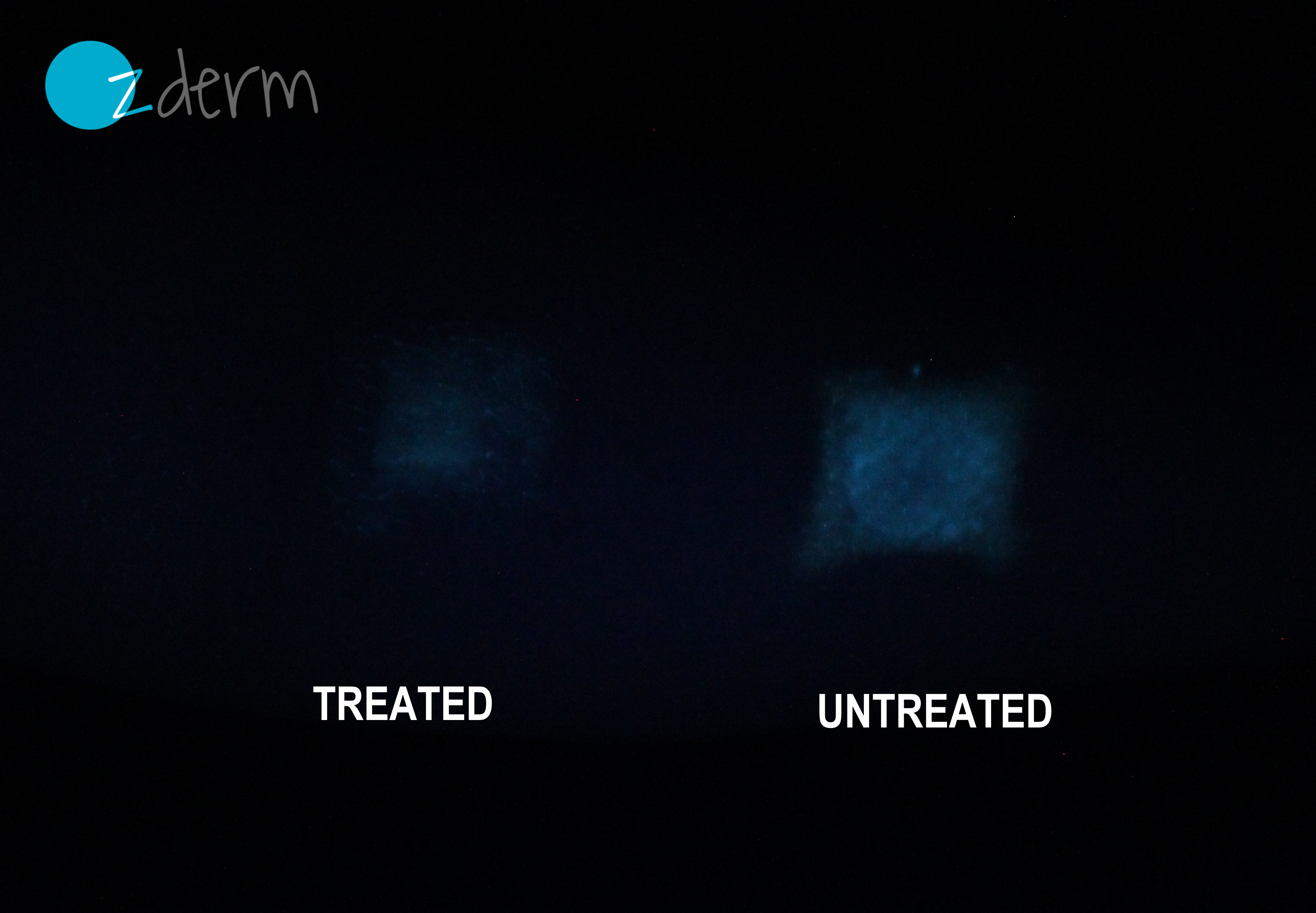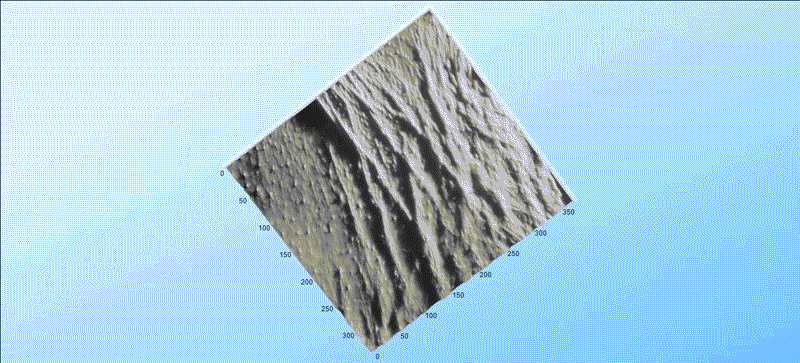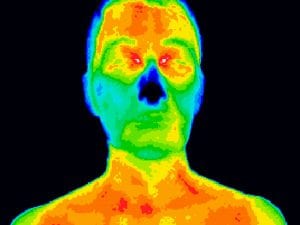During the 1970’s and 1980’s, several dermatological studies were conducted to evaluate and compare human skin cell turnover rate in healthy skin on different body regions, as well as examining skin turnover rate in subjects of different age groups. Assessment methods varied from the direct measurement of corneocytes released using specially constructed chambers, to skin staining techniques for visual assessment using different chemicals. In 1973, a study from Jensen et al. introduced the use of a fluorescent dye (dansyl chloride) that – unlike other dyes used in the past – did not cause skin irritation. The method is based on the ability of dansyl chloride to adhere to cells in the superficial layers of epidermis and fluoresce under UV light.
Application in Cosmetics Research
The “Dansyl Chloride Technique” has subsequently been adopted in cosmetics research to assess the efficacy of different skin care products in accelerating the normal skin renewal process. Skin cell renewal, more specifically the rate at which cells renew, is considered one of the major factors in measuring skin ‘anti-ageing’. Exfoliating agents are frequently used in many skin care products from ‘wash off’ (e.g. cleansers) as well as ‘leave on’ products (e.g. creams and serums). They are intended to improve the skin condition by accelerating the desquamation rate and inducing a faster stratum corneum turnover time (SCTT). By removing dead cells, and smoothen the superficial surface, they facilitate the skin renewal process to generate a smoother and softer new skin layer. Exfoliating properties can be attributed to ‘chemical’ peeling agents, such as glycolic acid, lactic acid, salicylic acid, etc., and ‘physical’ exfoliating particles, mainly found in cleansing products.
Refining the study design
In 1988 a study from Ridge et al. further added some important findings to the previous studies using the Dansyl Chloride Technique. They showed that in order to use the cell renewal methods to demonstrate changes in SCTT upon use of topical treatments, the skin must be pre-treated with the study products to establish full epidermal equilibrium at the changed mitotic state before skin staining with dansyl chloride. Therefore, treatment with test product should commence 2 weeks prior to and continued after staining with dansyl chloride. Ridge et al. also concluded that meaningful claims for the effects on skin cell renewal of certain ingredients or finished products should only be made after comparison with a placebo (e.g. base cream started at the same time as the test product) rather than on the basis of comparison with untreated skin only.
Case Study
In one of our recent studies investigating SCTT following use of topical treatment containing exfoliating agents, study participants were instructed to apply the test product on a specific area of the forearm and a reference product on a similar area on the opposite arm for a period of 2 weeks. Patches containing 5% dansyl chloride were then applied to the forearm skin surface on the area treated with the test product, the area treated with the placebo and an untreated area. Once the patches had been removed, standardised digital photographs were taken under UV light. The photographs were repeated at specific time intervals, and image analysis software was used to quantify the change (i.e. progressive disappearance) in fluorescence intensity, representing the renewal of skin cell layers.
Efficacy claims
For many years skin renewal has been regarded an important outcome for skin care products focusing on anti-ageing effects. In the cosmetic industry, acceleration of the natural skin renewal process in human has been associated with smoother, softer skin and reduction in the appearance of fine lines and wrinkles. The fluorescence staining technique using dansyl chloride, followed by image analysis of digital photos at set intervals, can be considered a suitable method to assess the efficacy of topical cosmetic products in speeding up turnover rate of the stratum corneum.
References
————————————————-
- Roberts, R. Marks (1980), The Determination of Regional and Age Variations in the Rate of Desquamation: A Comparison of Four Techniques, Journal of Investigative Dermatology, Volume 74, Issue 1, Pages 13-16.
Akahashi, Motoji & Machida, Yasuhiko & Marks, Ronald. (1987). Measurement of turnover time of stratum corneum using dansyl chloride fluorescence. J Soc Cosmet Chem. 38.
Jansen, L., Hojyo‐Tomoko, M. and Kligman, A. (1974), Improved fluorescence staining technique for estimating turnover of the human stratum corneum. British Journal of Dermatology, 90: 9-12.
Marks, R., Black, D., Hamami, I., Caunt, A. and MARSHALL, R. (1984), A simplified method for measurement of desquamation using dansyl chloride fluorescence. British Journal of Dermatology, 111: 265-270.
Idge, B.D. & D Batt, M & Palmer, H.E. & Jarrett, A. (1988). The dansyl chloride technique for stratum corneum renewal as an indicator of changes in epidermal mitotic activity following topical treatment. The British journal of dermatology. 118. 167-74.
Kitsongsermthon, Jutarat & Kreepoke, J & Duangweang, K & Tansirikongkol, A. (2017). In vivo exfoliating efficacy of biodegradable beads and the correlation with user’s satisfaction. Skin Research and Technology. 24.




